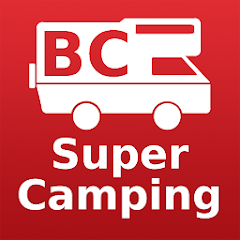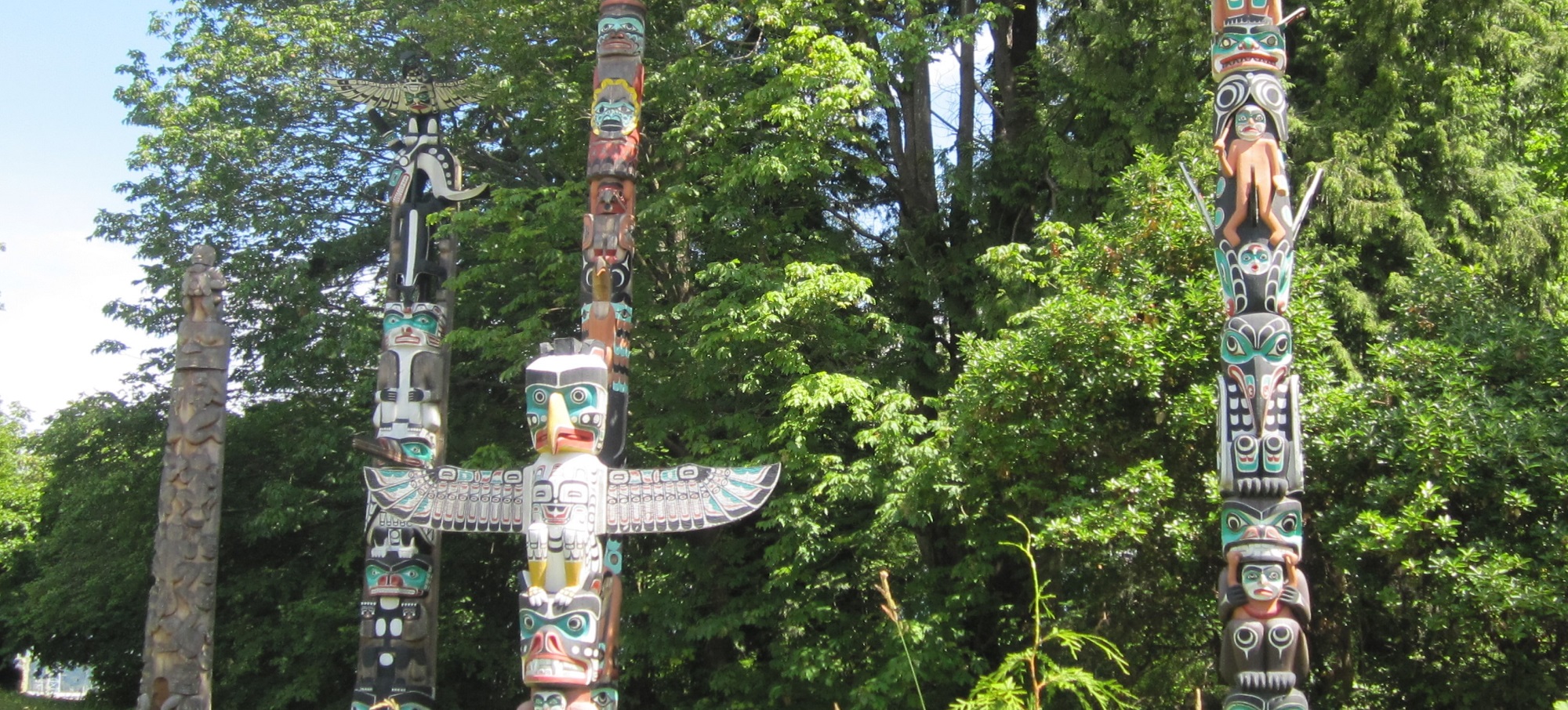Totems in Stanley Park, Vancouver
Vancouver
Vancouver is Canada’s third largest city and often touted as one of the world’s most liveable cities. Surrounded by the Coast Mountain Range and the Pacific Ocean, the area’s natural beauty provides stunning views and an abundance of outdoor activities. The southern boundary of the City of Vancouver is the North Arm of the Fraser River, one of the largest rivers entering the Pacific.
The downtown area of Vancouver is an eclectic mix of buildings and experiences. Walk along the waterfront with stunning views of the north shore mountains, see the cruise ships, and stop by the Olympic flame in Jack Poole Plaza, a proud reminder of the 2010 Winter Olympics held in Vancouver. Upscale stores, specialty shops and boutiques provide an abundance of shopping opportunities in the heart of downtown. To get a view over the city, ride to the top of the Harbour Centre tower for a 360° view of the surrounding sights.

Stanley Park, Vancouver | Destination BC / Albert Normandin
The crowning jewel of the region is Stanley Park, one of the largest city parks in North America. With an area of over 400 hectares (1,000 acres) and an 8.8 km (5.5 mi) seawall popular with walkers, runners and cyclists, Stanley Park is a must-see for visitors.
The mix of cultures has created some popular neighbourhoods in Vancouver, such as Little Italy on Commercial Drive, Chinatown, Gastown and trendy Yaletown and each have their specialty boutiques, restaurants and outdoor cafes and celebrate their cultures and history.
Granville Island Public Market, the Vancouver Aquarium, Science World, H.R. MacMillan Space Centre, the performing arts, galleries, nightlife are just a few of the many attractions to entice visitors.
Location
Located in the southwest corner of British Columbia in the Vancouver Coast & Mountains region. It is 38 km (24 mi) from the Canada-US border. There are several routes that bring you to Vancouver. From the east Hwy 1 crosses through several communities within Metro Vancouver. Exit on to Hwy 7A (Hastings Street) which, although a busy street, brings you straight into the city of Vancouver. From the north exit on to Hwy 99 from Hwy 1 and head over the Lions Gate Bridge and into the city. From the south take Hwy 99.
A Step Back in Time
For thousands of years segments of the Coast Salish people inhabited the area. Between 1592 and 1774 Spaniards explored the coast and later in 1792 Captain George Vancouver arrived. When he discovered the Spanish had already claimed the place he met with Spanish captains Valdez and Galiano on one of the beaches that today is known as Spanish Banks.
Simon Fraser, an explorer and fur trader, arrived in Vancouver in 1808, following an overland route from Eastern Canada by a river he thought was the Columbia. Even though he was wrong, the Fraser River is named after him.
The Hudson’s Bay Company built a trading post on the Fraser River in 1827 which became the first permanent non-native settlement in the Vancouver area. Then in 1867 a talkative chap nicknamed “Gassy Jack” opened a saloon for forestry workers on the shore of Burrard Inlet. It became so popular that a community built up around the place and called itself Gastown which later was incorporated as the town of Granville. The town of Granville grew to over 1,000 people and was incorporated as the City of Vancouver in 1886.
The Canadian Pacific Railway’s first transcontinental train arrived, sand was added to English Bay Beach, ice hockey was born and the Vancouver Millionaires became Stanley Cup champions in 1914-1915.
Many years later in 1986, Vancouver hosted the six-month world fair Expo ’86. In 2010 it hosted the highly successful 2010 Olympic and Paralympic Winter Games with 82 nations competing and watched by 2.5 billion people around the world.
Vancouver and Nearby Accommodations
British Columbia Lodging and Campgrounds Association Members
List
Map






